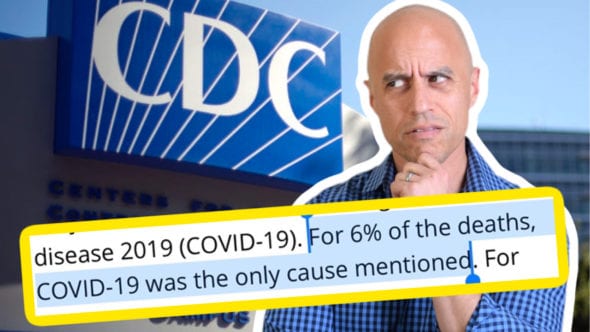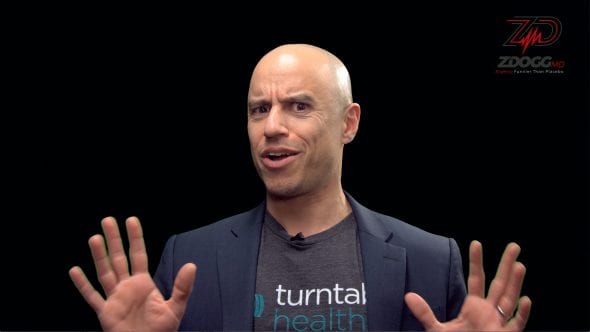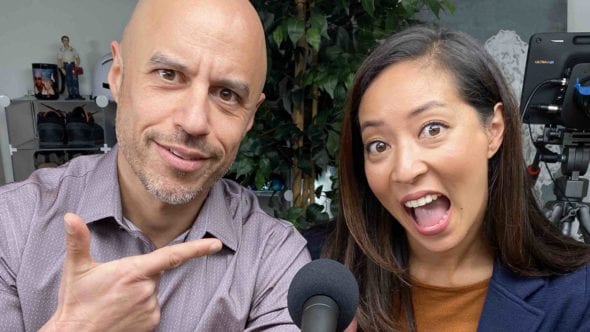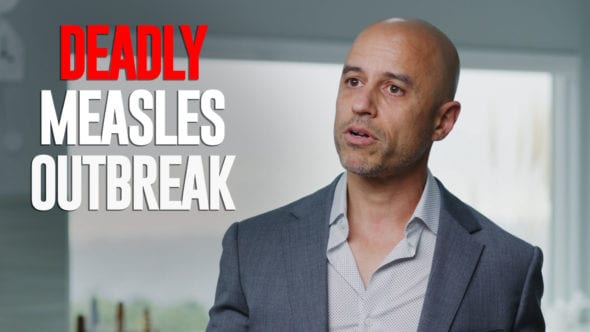Would you give a patient an antibiotic without ever meeting them?
What if you knew (or were pretty damn sure) that they had a sexually transmitted disease that might reinfect your recently treated patient?
EPT, or Expedited Partner Therapy, allows doctors to prescribe medication to their patients’ partners without examining them. The idea is to prevent the kind of reinfections and stop the transmission of STDs to others.
STD rates have hit an all-time high, according to the CDC. In 2017, the incidence of reported gonorrhea cases increased nearly 19 percent from a year earlier and the incidence of chlamydia cases rose almost 7 percent to 1.7 million.
How to treat using EPT?
Using gonorrhea as an example, the recommended treatment is an IM dose of ceftriaxone and a single dose of oral azithromycin (the azithromycin can partially cover gonorrhea, but importantly it also treats chlamydia which often co-infects these patients). But you can’t use an IM dose of medication with EPT, so what now? The CDC recommends using cefixime and azithromycin in EPT, because even with rising rates of resistance, this regimen is better than nothing. Harm reduction, plain and simple.
Is it legal??
Yes, except in Kentucky and South Carolina. And it’s ambiguous in 6 other states and Puerto Rico. However, the CDC does recommend it because the risks are outweighed by the benefits. The exception is in men who have sex with men (see the video or read the transcript to learn why).
This is your call to action ZPac: spread the word and find out if your state allows this practice. For more on the legality of it, check out the CDC’s website here. Watch the Facebook video and leave your comments. Full Transcript Below!
Video killing your phone battery? Check out the free podcast versions here on iTunes and Soundcloud.
https://www.facebook.com/ZDoggMD/videos/730698697306863/
– Hey, what’s up Z-Pac? It’s your boy ZDoggMD. Okay, today I wanna talk about something catastrophically important and that is sexually transmitted disease, and no, I’m not gonna call it sexually transmitted infections ’cause that’s dumb, and I won’t let the word Nazis win. We don’t call it the Centers for Infection Control, or CIC, it’s the Centers for Disease Control. Enjoy yourself.
Here’s the problem. Sexually transmitted diseases are flourishing in the US and A. We are epidemically high levels. In other words, we’ve never had levels of sexually transmitted infections at the point where we are now. Not only that but we’re seeing resistance to antibiotics and standard treatments for things like Gonorrhea which is severely problematic.
So what I wanna talk about today is something that a lot of clinicians don’t even know is a thing and that is EPT, or expedited partner therapy. Let me back up. Let’s say you come in and you’re diagnosed with chlamydia or gonorrhea. At this point, the doctor knows something that you might also know which is most likely your partner is also infected, and it is also common for these infections to be completely without symptoms in the partner. So that means that if you go back to that partner, even after getting your course of antibiotics or your one time treatment and you’re supposed to wait seven days after the initiation of treatment to have sex, of course most people won’t, and you’re supposed to, you know, test all your partners for the past 60 days because they could be infected, it doesn’t hardly ever actually happen because number one, people are lazy, number two, people are cray, number three, we don’t have resources, right, and so for that reason, the partner’s probably a reservoir of infection, the patient goes back, gets reinfected, and this is a huge problem because not only do you get reinfected, that partner can also spread disease to other people and promote the onset of resistance to the treatment.
So, what has historically happened is doctors tell the patient, “listen bro” or “gal, you need to tell your “partner to come in, and here’s some resources, “have ’em come in, we will test them, “we will screen them for other “sexually transmitted infections, “we’ll screen them for pregnancy if it’s a woman, “and we’ll do counseling, and we’ll “treat them as necessary.” Well, it turns out, the data has shown that this is not a very effective strategy because people don’t follow up, they don’t have the resources, they don’t talk to their partners, lots of different things happen.
So there was a study in 2014 looking at what happens if you actually just go ahead and treat the sexual partner of the patient you’re treating currently. This is called expedited partner treatment. Now, immediately, many doctors are gonna be triggered, and nurse practitioners and PAs are gonna be triggered. They’re gonna go “wait, wait, wait, wait, wait, wait, wait! “Every single board of medicine in the United States “would flip out and do flip out when you treat patients “that you’ve never seen, don’t have a “relationship with, and haven’t examined. ”
This is common ethics; you don’t treat patients “you don’t have a relationship with.” Why? Because you can cause harm. You don’t know what their allergies are, you don’t know what their other conditions are, you haven’t screened them, you haven’t counseled them, so this sounds like a terrible idea, right?
Well, in 2014 they studied this. What happens if you just call in a prescription for the partner of the patient you’re seeing? And only really for patients that aren’t gonna come in, they don’t have the resources, et cetera, or you give the patient the prescription to give to their partner. Well, it turns out that the data showed that they were more likely that the partners got treated, there was a lower risk of reinfection of your patient, so in other words, outcomes were better.
Okay, so this was actually a really eyeopening concept that you could actually treat a patient that you don’t have a relationship with. Now, here’s the thing, is it legal? Well, it turns out in most states it is. The exceptions are Kentucky and South Carolina. In those states it’s not yet legal to treat a partner without seeing them. There are a few states, a handful I think, six states including Puerto Rico where it’s ambiguous. You don’t really know.
Now, you can imagine the risk of this. You’re treating a patient, you don’t know what their allergies are, you don’t know what other medicines they’re on, and you don’t know their comorbidities are, but on balance, the CDC, Center for Disease Control, not infection control, has said that on balance, it’s a positive and they recommend it because the risks of this treating a partner are outweighed by the benefits, reducing reinfection, reducing transmission, and reducing resistance. So, for this reason, it turns out, and I agree with this, it’s a harm reduction strategy that we can treat partners without seeing them, and that CDC guidelines say you can do this, and if you review in things like up-to-date, et cetera, they also advocate this.
Now, they also advocate more studies. So we need bigger studies to see what are the downsides of this. Are we having, you know allergies, are we showing changes in resistance patterns, are we finding that there are other adverse events? One of the biggest difficulties is of course now you lose a chance to counsel and screen the partner. What if the partner has HIV and it’s untested, what if the partner has syphilis and it’s untested and you’re just looking at gonorrhea and chlamydia? So these are big problems, and this is why the CDC itself says for men who have sex with men they don’t recommend this because it’s more likely in those relationships that you could have gonorrhea of the pharynx, resistant diseases, and HIV that’s untreated, and so just blindly treating the partner remotely doesn’t make sense in those populations and it needs more study.
So that’s the nuance of this. Now how would you do this, because now gonorrhea, for example, the indications given rising resistance, they’re saying actually there’s no good oral treatment as a single dose like there used to be. It used to be you could just give an oral, you know, cephalosporin like Cefixime, something like that. Now they’re saying no, you have to come in and get a 250 milligram injection of Ceftriaxone, but they’re making an exception for expedited partner therapy. They’re saying well, in this case, you can do two drugs, oral Cefixime and oral Azithromycin, give it together, and hope for the best, because there’s still harm reduction in that compared to no treatment at all, and that should be your placebo is no treatment at all, and the data seems to suggest that’s worse than expedited partner therapy.
So the call to action, Z-Pac, educate your fellow caregivers about this, think about it in patients that you’re treating whose partner isn’t gonna come in, and that’s they key thing, you just don’t think they have the wherewithal to come in and follow up with the appointment, and spread the word, and if your state has outlawed this or is vague about it, maybe you wanna lobby for legislation that’s gonna change that. Talk to your own medical board and go to the CDC’s website. We’ll put links in the comments and in the web post for this where you can learn more about whether your state is covered and what the details of this are in terms of legality. They have more details at CDC’s website.
If you like this sort of educational programming, you can support it by becoming a supporter on Facebook. There’s a button that says become a supporter. You get access to all kinds of cool web videos with just me, early releases, rough cuts, different things like that, so it helps us a lot to become a supporter, so please sign up, and we out, peace!
(TOM)- Damn that was informative!
(ZDoggMD)- Laughs
Category
- The ZDoggMD Show (818)
- Featured Videos (189)
- Doc Vader (142)
- Against Medical Advice (128)
- Medical Humor (95)
- Public Service Announcements (87)
- Music Parodies (74)
- Nurses (59)
- Meditation (46)
- The VPZD Show (38)
- ZVlogg (36)
- ZTalks (28)
- ZBlogg (24)








